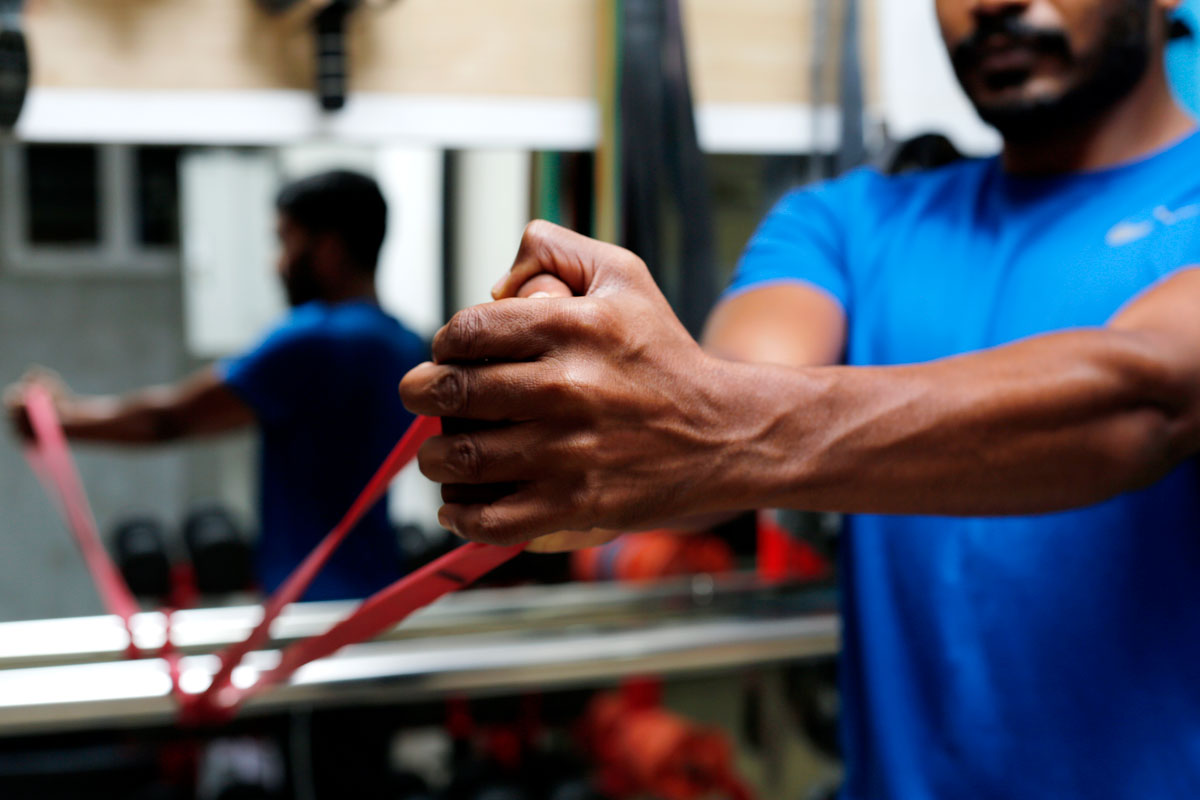
Primal Movement patterns are described as the simple movements that we develop to enhance the ability to perform in the early stages of life. They are the natural movements that our bodies are meant to easily perform.
However, we often find ourselves struggling to do these movements correctly in the form of exercise due to the sedentary lives that we tend to lead in the 21st century.
In this article, we will observe a few movement patterns that are considered as primal movement patterns.
We will be looking into:
- Squats
- Lunges
- Hinge
- Horizontal Push
- Horizontal Pull
- Vertical Push
- Vertical Pull
- Rotation/Anti Rotation and core bracing
- Gait
Squats
The Squat movement is when you lower your body towards the floor and overcome gravity to rise your body back up again, just as you’re sitting on a chair or the toilet or even climbing a coconut palm for toddy - we are meant to squat!
In the basic squat movement, it is important for you to
- Maintain a straight spine
- Keep feet hip width apart
- Ensure whole feet touches the floor
- Keep toes straight or slightly turned out
- Keep the shin and upper body parallel 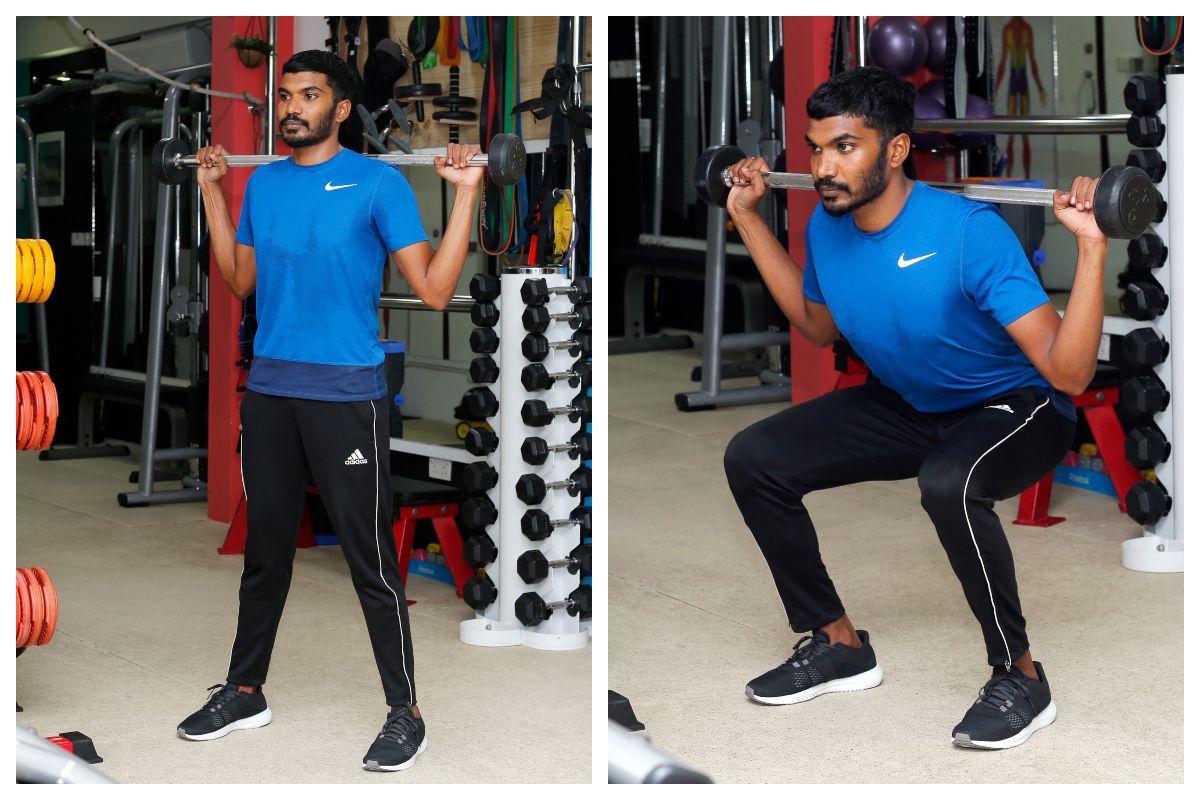
Here are some exercises you can perform to work on your squat movement
- Dumbbell squat
- Barbell Squat
- Goblet Squat
- Jump Squat
- Leg Press
Lunge
Climbing up the stairs or jumping over a puddle of water works the same mechanics and muscles of lunges!
Some people may find lunges a bit challenging to do, however, this is usually due to poor technique that could be fixed with simple awareness of the body’s positioning.
Lunges should be started by
- Kneel on floor, with one foot forward and one knee back (both knees creating a 90-degree angle)
- Mark the point where the front foot’s toe is
- Return back up to a standing position
- Step one leg forward with one foot aiming for the mark going into a split position
- Lower body down towards the ground, making sure your weight does not shift forward
- Ensure that by keeping torso perpendicular to floor
- Stop the movement before the back knee touches the floor
- Make sure most of the weight is on your front foot
- Slowly rise back up in to the split position 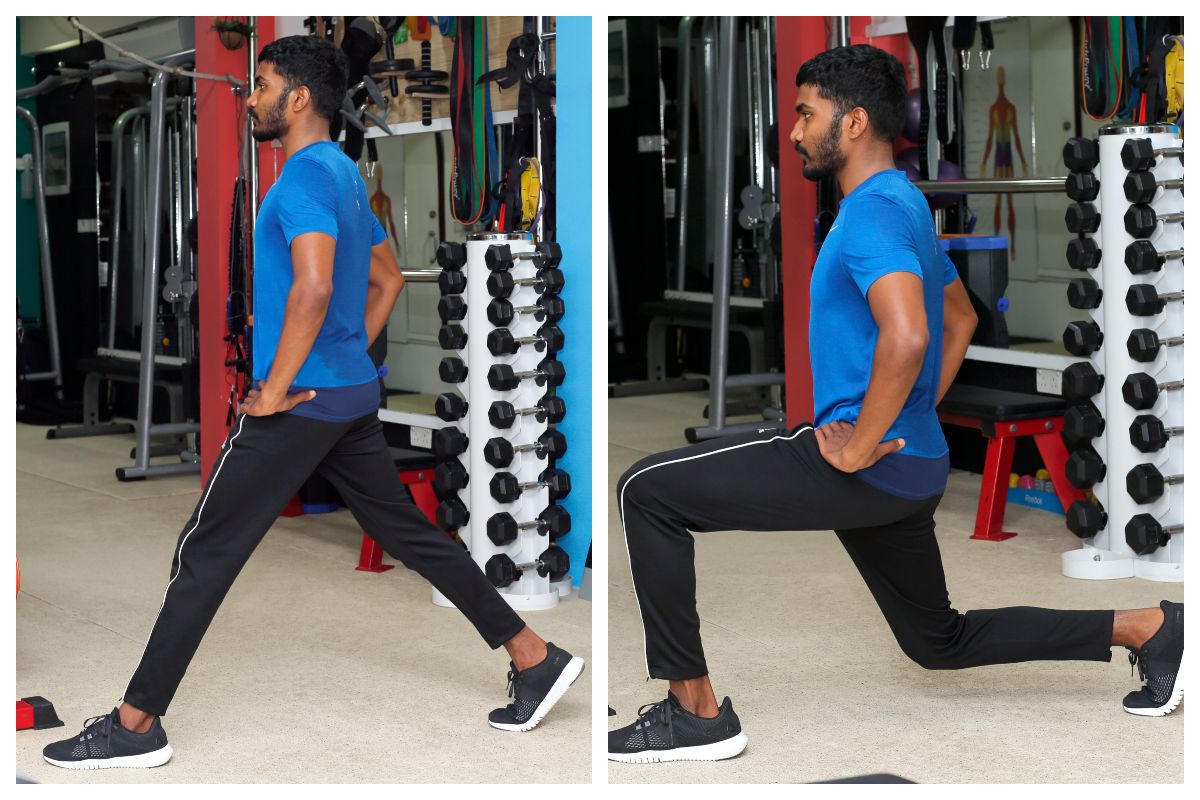
To work on your lunge movement pattern, try these exercises
- Step Up/Step Down
- Forward Lunge/ Backward Lunge
- Side Lunge
- Walking Lunges
- Jumping Lunges
Hinge (Deadlift)
The Hinge is a very essential exercise that is highly beneficial in our everyday lives when performed correctly and also dangerous if performed poorly. Imagine picking up a child or perhaps a bucket filled with water, or looking back to the days where Maldivians used water wells, they’d have to hinge from their hips to reach for the water in the well!
To do the (basic/modified) Deadlift
- Feet hip width apart
- Hold bar in hands
- Roll shoulders back and broaden collar bones
- Micro bend knees
- Keep spine neutral
- Hinge from hip
- Bring bar towards knees
- Come up and return to standing position 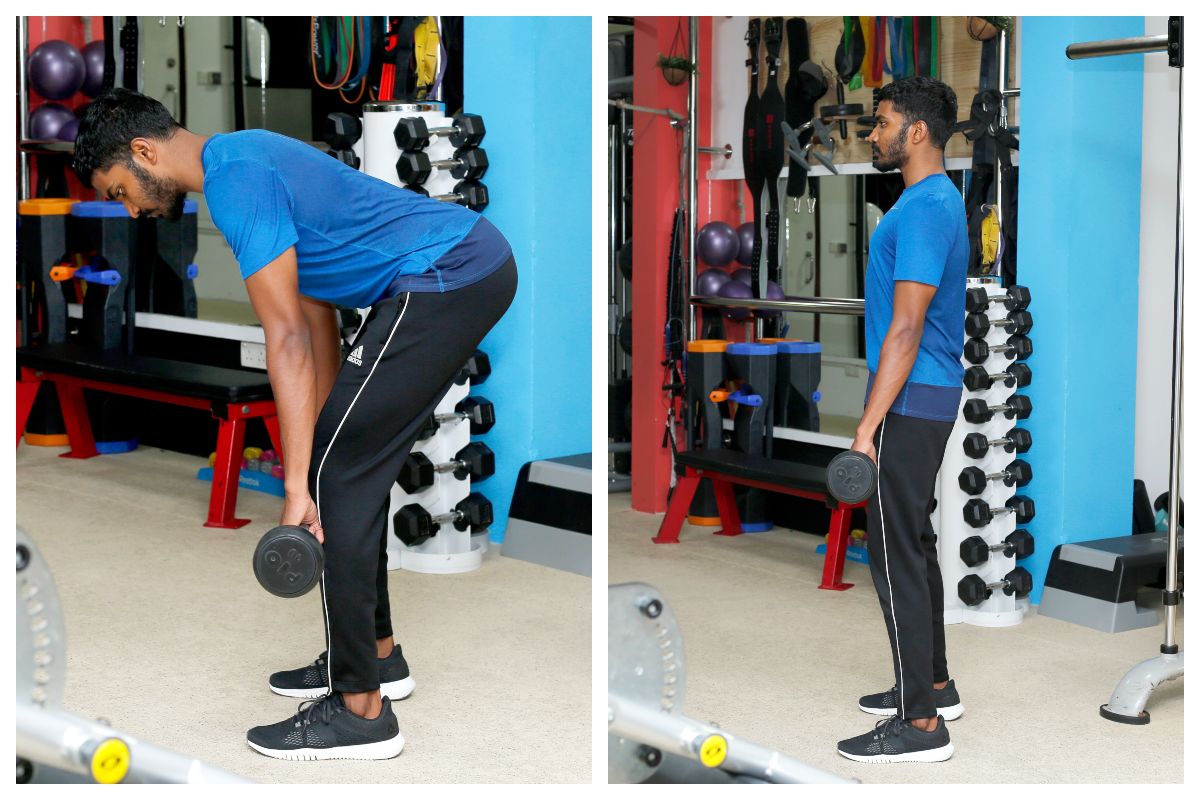
To work on your hinge movement, try these exercises:
- Conventional Deadlift
- Romanian Deadlift
- One Leg Deadlift
- Bulgarian Deadlift
Vertical Push
The Vertical Push movement use the chest, arms and shoulder muscles to create the movement of pushing overhead, against gravity. For these exercises, it is essential to stabilize the shoulder and keep the core braced to protect the spine. This movement is often done to work on shoulders and triceps.
To do a Vertical Push (using a Dumbbell)
- Bring hands to shoulder height, palms facing forward
- Slight internal rotation of the shoulder
- Push weight overhead
- Ensure you don’t lock the elbows at the top
- Return hands back down 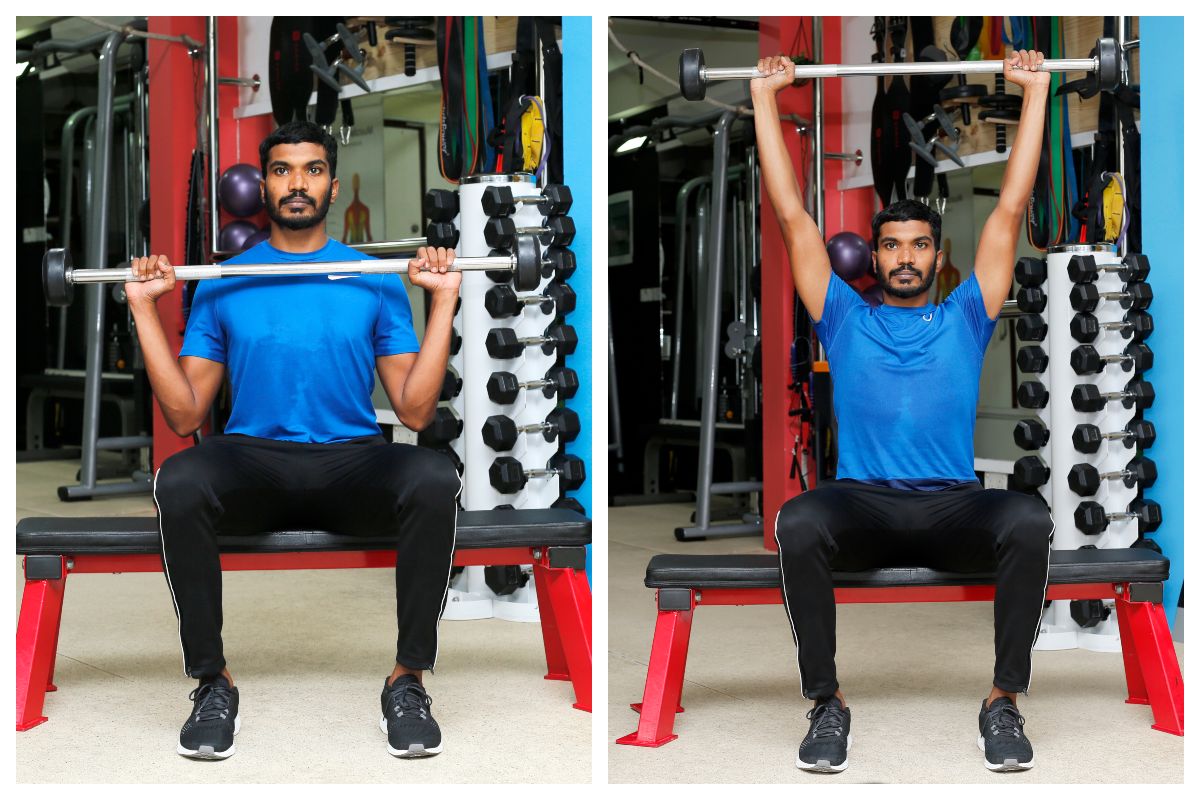
To work on your vertical push, try these exercise
- Dumbbell shoulder press
- Barbell shoulder press
- One arm shoulder press
- Bench tricep dip
- Hanging tricep dip
- Overhead tricep extension
Horizontal Push
This movement is when you push a weight or resistance away from your chest. It is performed by using the muscles of the chest and arms.
Things to keep in mind when doing a horizontal push
- Wrist and elbow should be level
- Elbow would be pointed away from the shoulder in an angle at bottom of range
- Forearms should be vertical at bottom of range
- Elbow should be soft at the top of the movement
Exercises to work on your horizontal push
- Body weight push up
- Narrow push up
- Barbell bench press
- Dumbbell Chest Press
Vertical Pull
This movement is all about pulling ourselves up, or pulling something towards us! This movement is usually done in a close grip or wide grip.
To perform a vertical pull
- Lean back slightly
- Core engaged
- Pull resistance towards chest
- Scapula should be stable
- Return resistance to start position 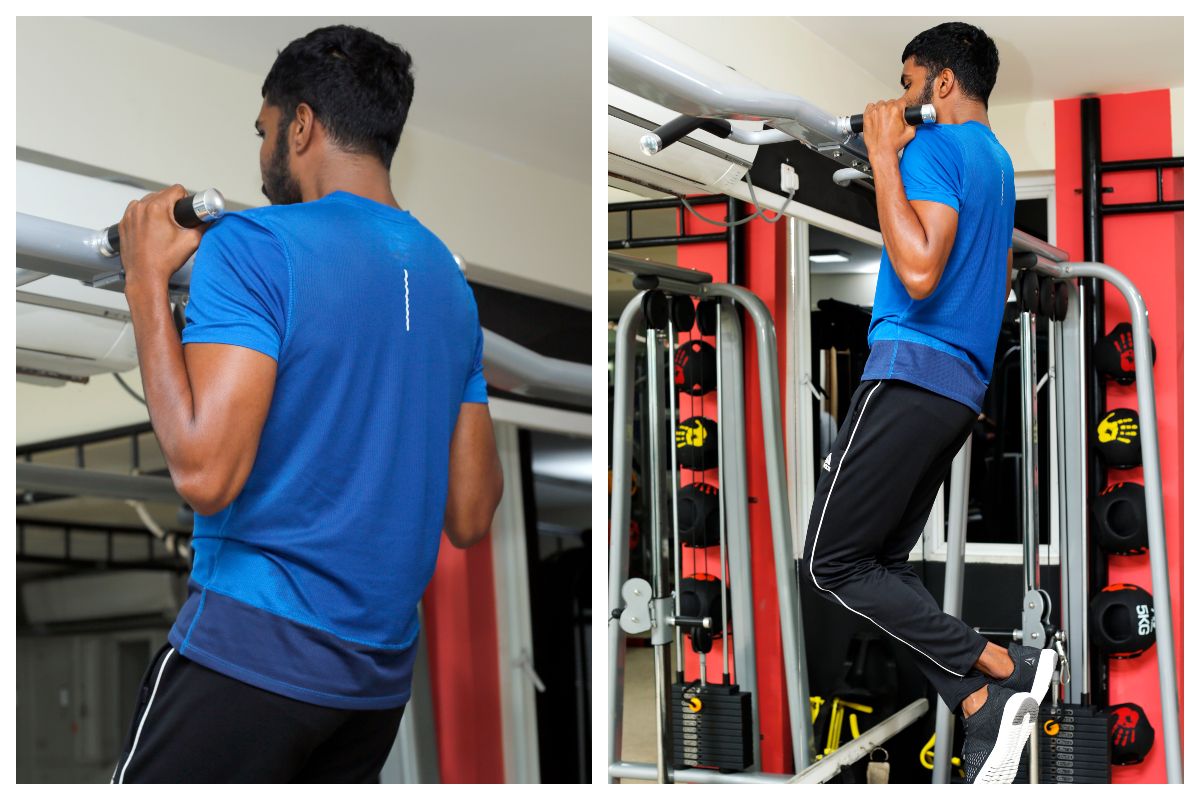
Exercises to perform the vertical pull
- Lat Pull Down (Close grip/Wide grip)
- Chin Up
- Pull Up
- Standing cable pull down
Horizontal Pull
This movement is when we move something towards our body in a horizontal direction - like rowing! The weight can usually be moved towards the chest, as well as the navel. This can also be done in a close grip or wide grip.
To perform a horizontal pull
- Keep core engaged
- Lean back slightly
- Pull resistance towards chest/navel
- Return to start position 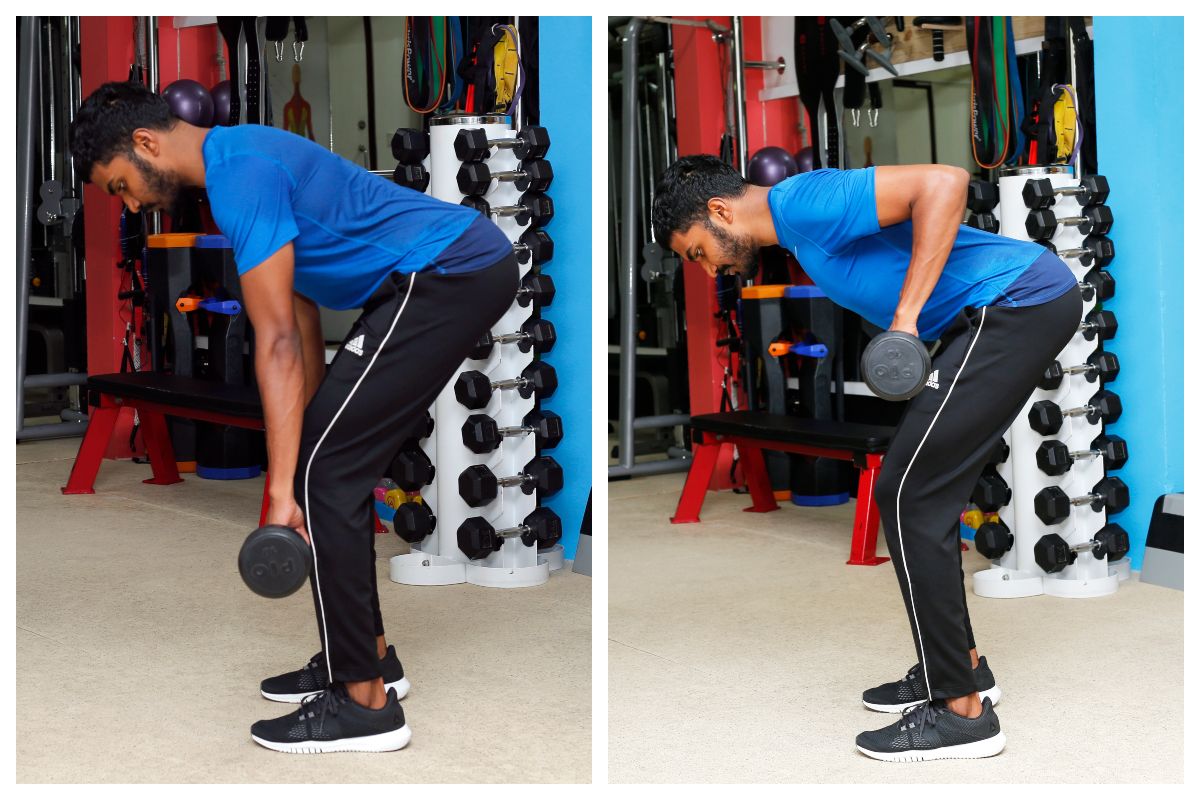
Exercises to perform the horizontal pull
- Seated Row (Wide grip/Close grip)
- Bench Pull
- Bent over Row
- One arm dumbbell row
- Standing Cable row
- One arm cable row
Core Activation / Rotation and Anti-Rotation
Core activation is the most important movement as this is part of all the other primal movement and it is an essential part of every single exercise. It is important to have strong core muscles to protect our spine and provide stability to our movement.
Rotation or twisting of the torso can be done when core activation is established.
Exercises that can be done to perform this movement are
- Cable Wood chop
- Russian Twist
- Rotation using Resistance bands
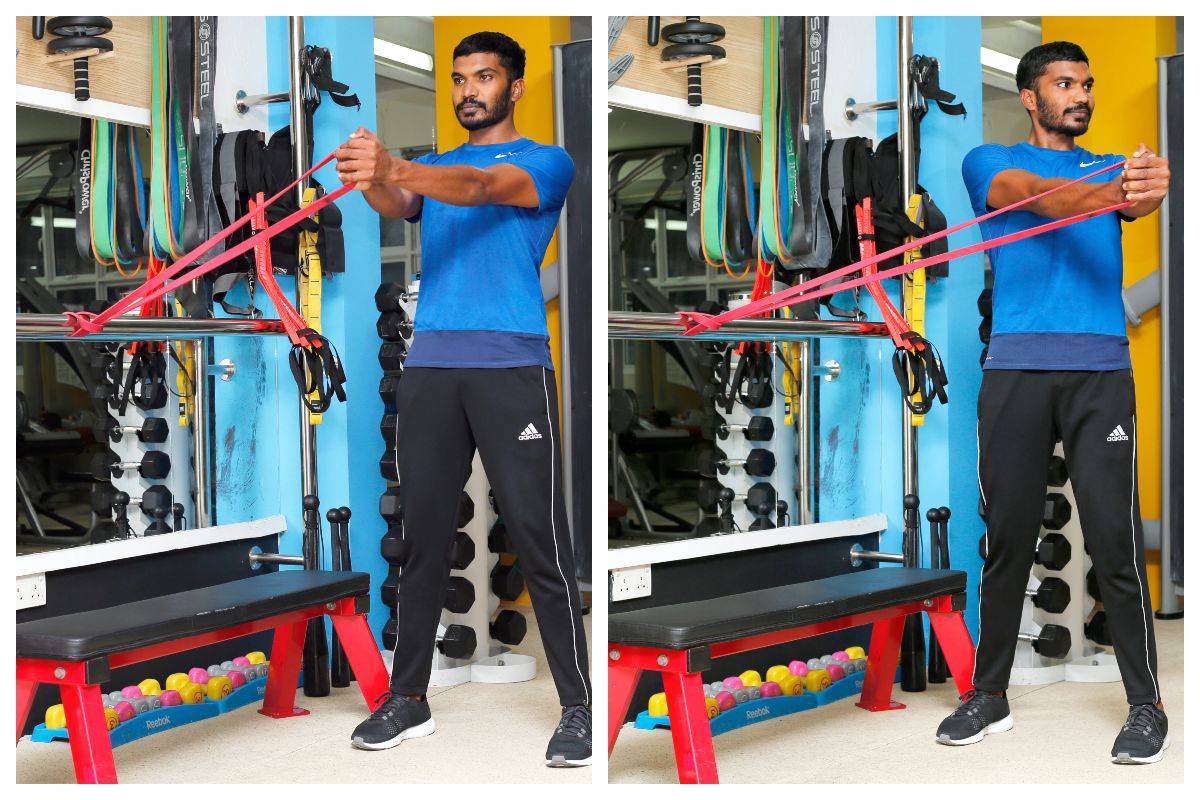
Anti-Rotation is when the rotation movement is prevented. Exercises that can be done to perform this movement are
- Palloff Press
Gait
Gait is another name for describing the most common primal movement of our everyday. It is a dynamic movement and working on our gait in the form of exercising will surely enhance the quality of our movement in our daily lives.
When working on our gait, it is essential that we keep our core muscles engaged, and place our feet in the correct pattern.
Exercises that work on our gait:
- Walking
- Jogging
- Jumping
- Skipping
- Farmers Walk (shown on video)

The Primal Movement Patterns are the ways in which our bodies are designed to move as one complex yet unique unit. We should try our best to work on every one of these exercises individually, at least once a week.
The more you get stronger with these movement patterns, you will surely see the difference in your ability to perform everyday activities with more strength and at ease.



Leave a comment
0 Comments